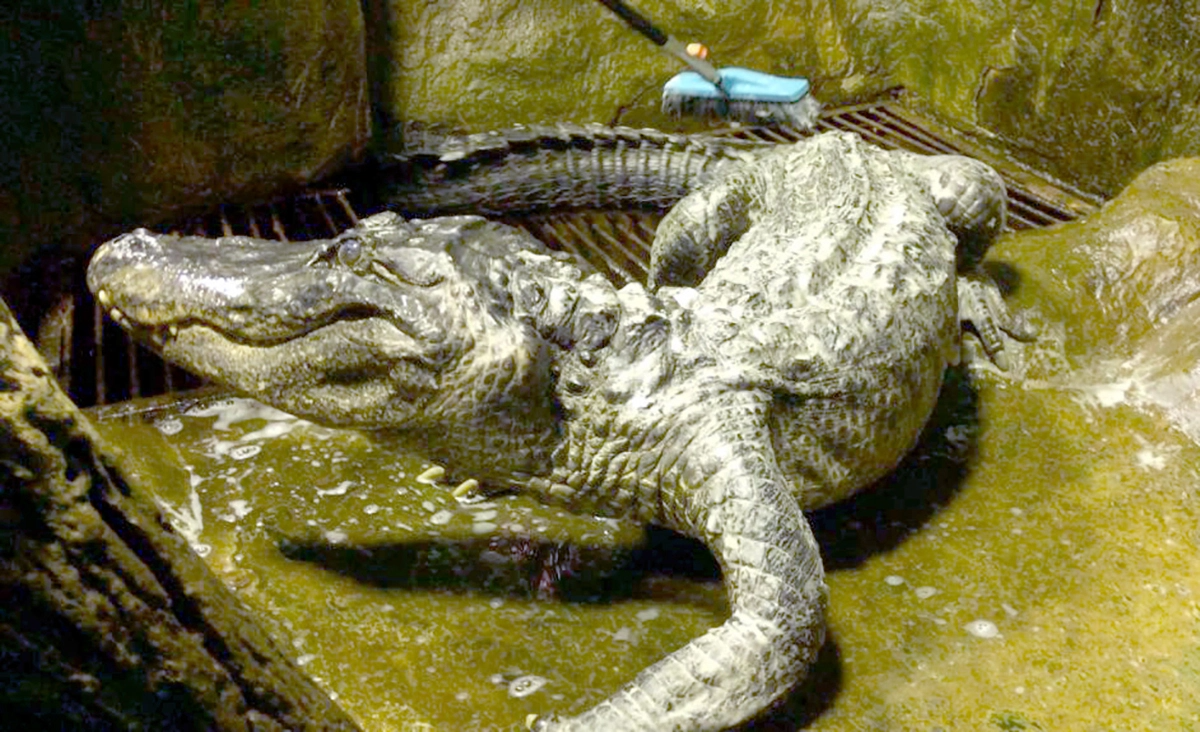It is a long way from Mississippi in the USA to Moscow in Russia, but that is the unlikely journey made by an alligator, hatched in the wild in 1936 and dispatched to Berlin’s Zoological Gardens.
Christened ‘Saturn’, the reptile was put on public display in the German Capital, where he caught the eye of the infamous Fuhrer Adolf Hitler.
A popular myth grew around the alligator that it was, in fact, Hitler’s pet, even though it was never documented that the two ever came into physical contact.
Moscow veterinarian, Dmitry Vasilyev is otherwise convinced, pointing out that Hitler was an occasional visitor to the Berlin Zoo. Russian writer Boris Akunin also wrote in an article some time ago that Saturn was part of an extended menagerie presided over by the leader of the Reich.
But now, at 84, the Mississippi born alligator has passed away peacefully in his Moscow enclosure. In a statement the Zoo confirmed that Saturn had been a ‘picky eater’ and that he had enjoyed a good rub-down with a brush.
He also had a reputation for destroying feeding tongs and concrete décor he took a dislike to, while retaining an excellent memory for favourite keepers. In the end he spent most of his life, 74 years, in Moscow, while his early years were full of drama.
Toward the closing years of WWII, on November 23rd, 1943 the aquarium building at the Zoo was destroyed by an allied bomb. It was reported that the streets surrounding the park were littered with the bodies of dozens of reptiles, alligators, crocodiles and other creatures.
Of 16,000 animals in the Zoo fewer than 100 survived the destruction, hiding in the ruins and venturing out into neighbouring districts in the hunt for food. Amongst their number was Saturn, a four-hundred-pound, yellow-eyed, green-scaled many-toothed hunter.
At the end of the War in Europe the remains of the Berlin Zoological Gardens were to be found in the British Zone of Occupation and it was in 1946 that a British patrol discovered the alligator.
Saturn was captured and then transported to Leipzig where he was handed over to the Soviets.
In July 1946 he joined an Indian python and was taken by the Red Army to Moscow. Sadly, details of the journey and the documents drafted in regard to the receipt of Saturn were destroyed in a fire at the Moscow tourist office in the 1950s.
Вчера утром наш миссисипский аллигатор Сатурн умер от старости. Ему было около 84 лет – крайне почтенный возраст. Московскому зоопарку выпала честь содержать Сатурна 74 года. Он видел многих из нас детьми. Надеемся, что мы его не разочаровали. pic.twitter.com/UigsB8xwBv
— Московский Зоопарк (@moscowzoo) May 23, 2020
Saturn the Alligator proved to be a big hit at the Moscow Zoo where he was nicknamed Hitler because of his most recent stay in Berlin.
Ten years later the USA sent across a female friend for Saturn, named Shipka. Unfortunately, none of the eggs produced by this union were fertile.
In 1993, Russian tanks rode past the Zoo during the ‘constitutional crisis’ causing vibrations that drew a stress reaction from Saturn, which his keeper noted must have been similar to the disaster that struck Berlin Zoo fifty years before.
It was not all plain sailing at Moscow. Once a concrete slab fell from the ceiling narrowly missing the alligator. Another time a drunk visitor threw rocks at him causing the veterinary staff concern.
When the time came in the 1990s to move Saturn to a new aquarium, he went on hunger strike in protest at the change.
In 2015, following another aquarium renovation, Saturn went back on public display.
The head of the reptile department Vladimir Kudryavtsev said that not many people were aware of the peculiar history of the aged alligator, a reptile reputed to have been in the private collection of Adolf Hitler.
Fantastic News: DDay Hero Kicks Covid-19 Into Touch
Adolf Hitler was often shown as a man with an affinity for the animal world in Nazi propaganda and he was photographed many times with his Alsatian Blondi.
